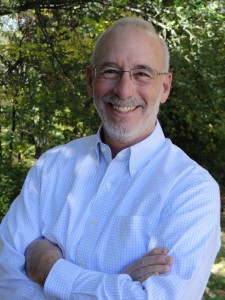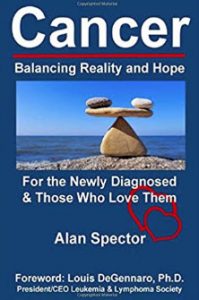

The statistics are not encouraging. Greater than 40% of Americans will be diagnosed with cancer in our lifetime, and that percentage is expected to rise because of improved diagnostic techniques and the aging of the population.
With regard to age, 77% of cancer diagnoses occur among those older than 55 and 53% among those older than 65. The National Cancer Institute of the National Institutes of Health states, “Advancing age is the most important factor for cancer overall…”
The odds are high, therefore, that as we age, each of us will be touched by cancer, either as a survivor or a loved one.
This is not a very uplifting way to begin a “Put Old on Hold” article but hang in there with me. It’s far from being all gloom and doom. In my recently-published book, Cancer: Balancing Reality and Hope, I suggest an approach to develop a path forward, even in the face of cancer or any other disease for that matter.
Fortunately, the approach is the same even if you have not been touched by a cancer diagnosis. Simply said—create and live a fulfilling life plan.
In the context of a cancer diagnosis, this means we need to develop two plans. First, in collaboration with our medical team, we create our cancer plan—determine our course of treatment; anticipate and address side effects of that treatment; and take steps to cope with the new and persistent emotions.
While the urgency and emotions of a cancer diagnosis may feel, and at times be, all-consuming, the reality is that there is also a non-cancer segment of our lives. The size of that segment varies from person to person based on each individual’s diagnosis, prognosis, and life circumstances. All of that forms the basis of the second plan, our non-cancer life plan.
When my friend, Keith Lawrence, and I co-authored the book, Your Retirement Quest, we identified what we refer to as the “10 key elements of a fulfilling retirement.” As it turns out the 10 key elements apply to life in general, not just retirement. And for survivors and loved ones, the 10 key elements certainly apply to our non-cancer life. The magic of developing our non-cancer life plan is to integrate aspects of each of the 10 key elements.
The key elements, which I’ve described in Cancer: Balancing Reality and Hope, are attitude, connectedness (or relationships), giving back, passions, financial security, life purpose, well-being, growth, fun, and planning. Let’s pick “passions” as but one example to see how it can affect a life plan.
Sheila Schwartz was an award-winning writer and collegiate creative writing teacher when she was diagnosed with ovarian cancer. Eight years, two remissions, and a third return later, Sheila was still leaning into her future when she died. In his article, “What Happened to Sheila,” her husband, Dan Chaon, wrote, “…we continued to make plans.” These were plans that enabled Sheila to continue to live her best life by following her passions.
When she died, said Dan Chaon, they had made plane reservations for a trip to Europe a year in advance (passion: travel); Sheila had worried over her flower garden, getting it ready for the winter so that it would be pretty in the spring (passion: gardening); and she was finishing a novel and had outlines of two new books of short stories on her computer (passion: writing). These were but a part of Sheila Schwartz’s non-cancer life plan.
Yes, she had a cancer plan, addressing the reality of her disease and its treatments. Yes, she was building hope by leaning into her future. And yes, she was balancing reality and hope by creating and living her best life.
Thanks to Barbara Morris, we know to “put old on hold.” A cancer diagnosis may cause us to put life on hold. The opportunity is to create and live our non-cancer life plan. And perhaps the best way to do that is to create and live our life plan even before we are touched by the disease.
——————————————————————-
Alan Spector brings a unique set of life experiences to his recently-published book, Cancer: Balancing Reality and Hope. He is a nine-year leukemia survivor. He is a strategic planning consultant for large cancer organizations around the country. He has been studying, writing, speaking, and coaching others about life planning for nearly two decades. And he has written six previous books. Since retiring from a successful 33-year executive career with the Procter & Gamble Company, Alan has been a founding partner of three businesses and deeply involved with social service organizations, community initiatives to reduce violence, and education programming. He is a management consultant, baseball player, nonprofit Board member, speaker, blogger, and most importantly, the active and proud grandfather of four. Alan lives in St. Louis with his wife, Ann, with whom he travels extensively.

Leave a Reply